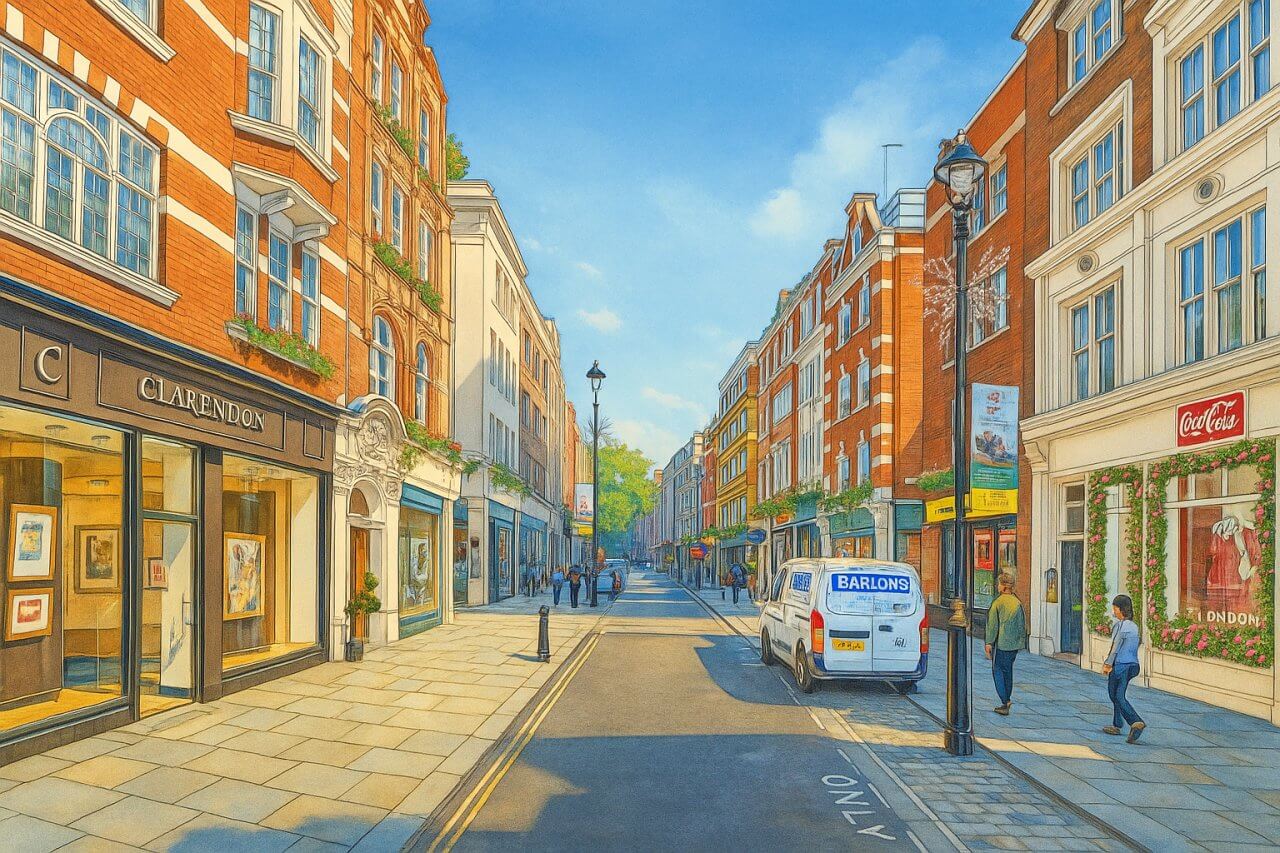
Long Acre, London
Long Acre is a prominent street in the West End of London, located within the City of Westminster. It stretches from the junction with Drury Lane and Great Queen Street in the northeast to a bustling six-way intersection where it meets Garrick Street, St Martin's Lane, Cranbourn Street, Great Newport Street, and Upper St Martin’s Lane. Today, it is known for its blend of retail, commercial, and residential uses, as well as its proximity to theatres, Covent Garden, and other West End attractions.
Street Layout and Surroundings
Long Acre is an east–west thoroughfare that sits just north of Covent Garden. The eastern stretch near Drury Lane feels relatively calm and commercial, gradually becoming more vibrant as it approaches St Martin’s Lane. The street itself is lined with a mix of modern buildings and heritage facades, housing everything from flagship retail stores and boutique fashion outlets to offices and residences above street level.
The area is pedestrian-friendly, with narrow pavements in some stretches and nearby pedestrianised zones, especially near the junctions closer to Leicester Square. Adjacent streets such as Neal Street, Endell Street, and Floral Street are popular with shoppers and visitors exploring Covent Garden.
Connecting Streets
- Arne Street
- Bow Street
- Cranbourn Street
- Drury Lane
- Endell Street
- Garrick Street
- Great Newport Street
- Great Queen Street
- Langley Street
- Mercer Street
- St Martin's Lane
- Upper St Martin's Lane
History of Long Acre
Long Acre has a rich history dating back to the early 17th century. It was laid out in 1612 following the acquisition of land from Westminster Abbey by John Russell, 1st Earl of Bedford. The street’s name, Long Acre, is believed to have derived from the shape of a field or estate parcel that existed prior to its development—described as a "long acre" in traditional English land-measuring terms.
In the 17th and 18th centuries, Long Acre became known for its coach-building trade, with numerous carriage makers operating on the street. This association lasted into the early 20th century, when the rise of the automobile led to car dealerships and showrooms replacing the older coachworks. Over time, Long Acre transitioned into a more retail- and office-oriented street, though hints of its industrial and commercial past remain visible in some surviving facades.
Points of Interest
While Long Acre itself is not home to major tourist sights, it sits at the heart of several key destinations:
- Covent Garden Market is just a short walk away to the south, offering shops, restaurants, and street performances.
- London Transport Museum is nearby, offering engaging exhibits about the city’s transit history.
- The area is also close to the Noël Coward Theatre and St Martin’s Theatre, both of which are popular with theatregoers.
- Street performers and pop-up markets are commonly found in adjacent pedestrianised areas, adding vibrancy to the neighbourhood.
Property and Real Estate
As of June 2025, residential properties along and just off Long Acre command premium prices, reflecting the street's central location and historic cachet. Modern flats in converted or mixed-use buildings typically range from 700 to 1,100 sq ft (65–102 sq metres). Prices for properties of this size are generally between £1.3 million and £2.1 million, depending on the building’s amenities and views.
Rental prices in the area are equally steep, with one-bedroom flats averaging between £3,000 and £4,500 per month, and larger two-bedroom units fetching upwards of £6,000 monthly. These figures are significantly higher than the London average, though they are consistent with other premium addresses in the West End and Soho area.
Transport Connections
Nearest London Underground Stations
Long Acre is particularly well served by public transport. The closest London Underground Stations include:
- Leicester Square Station (Northern and Piccadilly lines) – located just to the west of Long Acre.
- Covent Garden Station (Piccadilly line) – situated on the south side of Long Acre, near James Street.
- Holborn Station (Central and Piccadilly lines) – approximately 7 minutes' walk to the northeast.
Bus Routes
Several Transport for London (TfL) bus routes serve nearby streets, including those along Drury Lane, Charing Cross Road, and Shaftesbury Avenue. Bus stops can be found on both ends of Long Acre, providing easy north–south and east–west access through central London.
Fun Fact
In 1906, Long Acre was the location of one of the city’s first purpose-built motor car showrooms. A sign of the times, the street helped transition London from the age of horse-drawn carriages to the automobile era—cementing its role as a hub of transport innovation.
Quick Facts
- Location: West End, City of Westminster
- Connected Streets: Drury Lane, Great Queen Street, Garrick Street, St Martin’s Lane, Cranbourn Street, Great Newport Street, Upper St Martin’s Lane
- Historic Use: Coach-building, car showrooms
- Name Origin: Named after the shape of the land parcel ("long acre")
- Nearby Sights: Covent Garden Market, London Transport Museum, West End theatres
- Property Prices (2025): £1.3M–£2.1M for flats (700–1,100 sq ft / 65–102 sq m)
- Average Rent: £3,000–£6,000/month depending on size
- Nearest Tube Stations: Leicester Square, Covent Garden, Holborn
- Bus Access: Multiple routes via Drury Lane, Charing Cross Road
- Fun Fact: Home to one of London’s earliest car showrooms in 1906
Map of Long Acre, London
 Painting of Long Acre, London
Painting of Long Acre, London